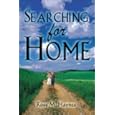
The title of the book made me curious. What did Alfred the Great have to do with a white horse – did he ride one into battle? All I really knew of him was that he burned some cakes, so it seemed like a good idea to read about his life. Thomas Nelson was kind enough to send me a copy as part of the Book Review Bloggers program, and it was an enjoyable if not superb read.
The White Horse King
I have to admit, this book gave me some wonderful A Song of Ice and Fire flashbacks.
Merkle goes on to describe how Alfred, despite being fifth in line from the throne, eventually became king of Wessex and took on the heavy responsibility of protecting the land from the foreign pillagers – even when they forced him to flee his seat of power and live as a wanderer in Athelney. The Vikings not only outnumbered him, but were more ruthless and lived for battle. Many of Alfred’s men, while loyal to him, had their farms and families to consider and were by no means a professional fighting force.
Alfred resorted to a a number of tactics to deal with the Vikings, from raising a standing army to reinforcing the defenses of strategic towns to building up a navy that could deal with the dragon-prowed longships. Finally, he extended generous terms to captive Viking chieftains – even persuading one of them to convert to Christianity.
Though I did enjoy the response of another Viking chieftain to what must have seemed like near-constant conversion attempts from Saxons. He received baptism from the bishop of Luna, but later that day, a message was sent to the bishop that the chieftain had died. A huge Viking funeral procession made it way into the cathedral, carrying the corpse on a bier, with clergymen and choristers in attendance. Once inside the cathedral, the dead chieftain came back to life in a hurry and his men proceeded to sack the town.
I believe he ended up being baptized at least three or four times, or until people caught on to the ruse.
There’s also a significant level of research in this book. Merkle does a good job of describing the land, its politics and the battle tactics of that time – especially the shieldwall. If there’s a flaw here, it’s in the depiction of Alfred himself. Merkle’s style is such that I always saw Alfred from a distance, rather than getting up close and personal, being in his mind.
Then again, Alfred is clearly as white as the horse of the title, while the Vikings are just as obviously the black helms of the story. Their paganism, greed, dishonesty, etc. is always contrasted with the Christianized nobility of the Saxons, so of course I couldn’t help liking them a little. Plus, their “blood eagle” method of execution is unforgettable.
So in conclusion, the book was worth reading, though it could have been deeper and more complex. Oh, and the white horse? That’s a giant chalk figure on a hill where Alfred won one of his most significant battles. And perhaps the biblical parallel of the white horse in Revelations inspired it to be chosen for the title as well.















